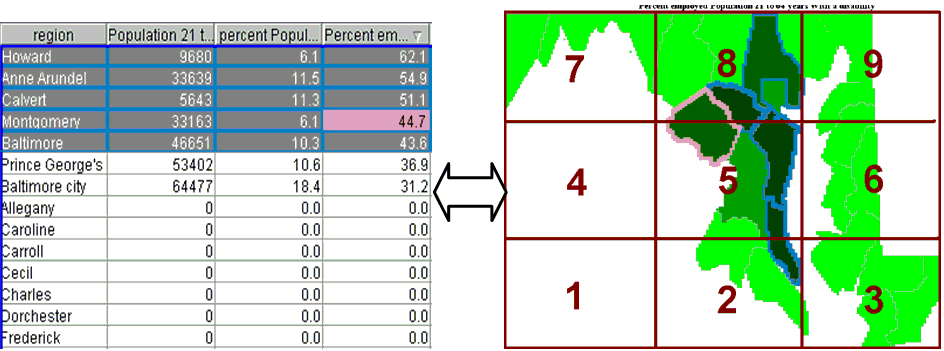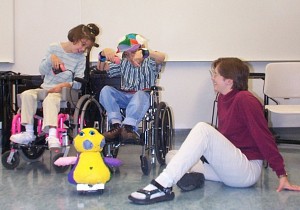Catherine Plaisant – Older Projects
Return to Catherine’s Main Page
SHARP-C: Novel user interfaces for clinicians
We looked at problems of medication reconciliation (Twinlist), missed labs and wrong patient selection.
LifeFlow: An early version of EventFlow, focusing on the summarization of temporal sequences of events. Applications were developed for electronic health records, transportation incidents, web logs etc.
LifeLines2, Patternfinder then later Patternfinder in Azyxxi looked at interfaces for
searching temporal categorical data, visually explore results and look for potential cause and effect.
Our focus was on Electronic Health Records. [Video by David Wang]
MONK was a large multi-institution project whose goal is to design and develop a digital environment
helping humanities scholars discover and analyze patterns in the large collections of texts they study,
using data mining and visualization.
It followed the the NORA project.
See JCDL paper nominated for Best Paper award (or the related HCIL project highlight ) or the FeatureLens and BasketLens projects
TreePlus, for browsing graphs using a tree layout, with an emphasis on readability.
It was used to display social networks and food webs. [Video]
NetLens for iterative querying of bipartite graphs such of bibliographic data or email collections. [Video]
TimeSearcher for exploration of time series.
Information Visualization Benchmarks Repository and the InfoVis CONTESTS we ran in 2003 and 2004.
Integration of Data and Interfaces to Enhance Human Understanding of Government Statistics: A collaborative project with University of North Carolina. Our motto: “Find what you need, understand what you found”. We worked on diverse topics but my main focus was on new methods for helping novice users get started with complex interfaces, dealing with missing data, and improving accessibility to blind users (see the project below)
iSonic: making georeferenced data accessible to users with visual impairments [Video by Haixia Zhao]

Interliving: New Technology for Families: In particular we developed and evaluated to share calendar information between intergenerational family members, using digital pen technology.
Treemap 4: New development in hierarchical information visualization with Treemap
SpaceTree: a scalable and searchable hierarchical information browser. VIDEO
A story telling robot for children in rehabilitation.
PhotoFinder: Personal Photo Libraries
Excentric Labeling for Information Visualization
User interfaces for highway traffic management: In collaboration with the Center for Advanced Transportation Technology.
Dynamic Queries and Query Preview Interfaces: Looked at how to avoid zero-hit queries with dynamic previews of the data available. In collaboration with NASA EOSDIS. Later on some of those ideas were applied in the user interfaces of the Global Land Cover Facility, and influenced the development of faceted search now common in many interfaces.
Learning Histories for Simulation-based engineering education environments
LifeLines for Visualizing Medical Patient Records (and other personal histories) [VIDEO]
User Interfaces for the Library of Congress National Digital Library: How to “bring treasures to the surface” in the design of Digital Libraries.
See also WebTOC: a Tool to Visualize and Quantify Web Sites using a Hierarchical Table of Contents
User Interfaces for the Visible Human Projec
(1992-93) Cancer Atlas: Dynamic Queries on a choropleth map [6:43 on the video]
High precision touchscreens, Information Kiosks, Home Automation (Summary) e.g. [Video] of the Scheduler
Touchscreen ON/OFF switches (see HCIL touchscreen research summary)
[VIDEO]
Hypertext research (my first project at HCIL in 1987!)
Role Management as a guiding concept for the next generation of user interfaces (Summary)
User interfaces for Youth Services Information Systems
Young children, the discovery of the written language
My first work project, at the Centre Mondial Informatique et Ressources Humaines, Paris, France.
- (Sample from book) Barrière, M., Cohen, R., Halfter, C., Naymark, J. , Plaisant, C., Stamback., C., Les jeunes enfants, la découverte de l’écrit et l’ordinateur, (i.e. Young children, the discovery of the written language and computers) Presse Universitaire de France, Paris (1987).
- Plaisant, C., and Naymark J., The computer and the pre-school child; the written language and play, Comput. Educ. 10(1), 167-174 (1986)






















